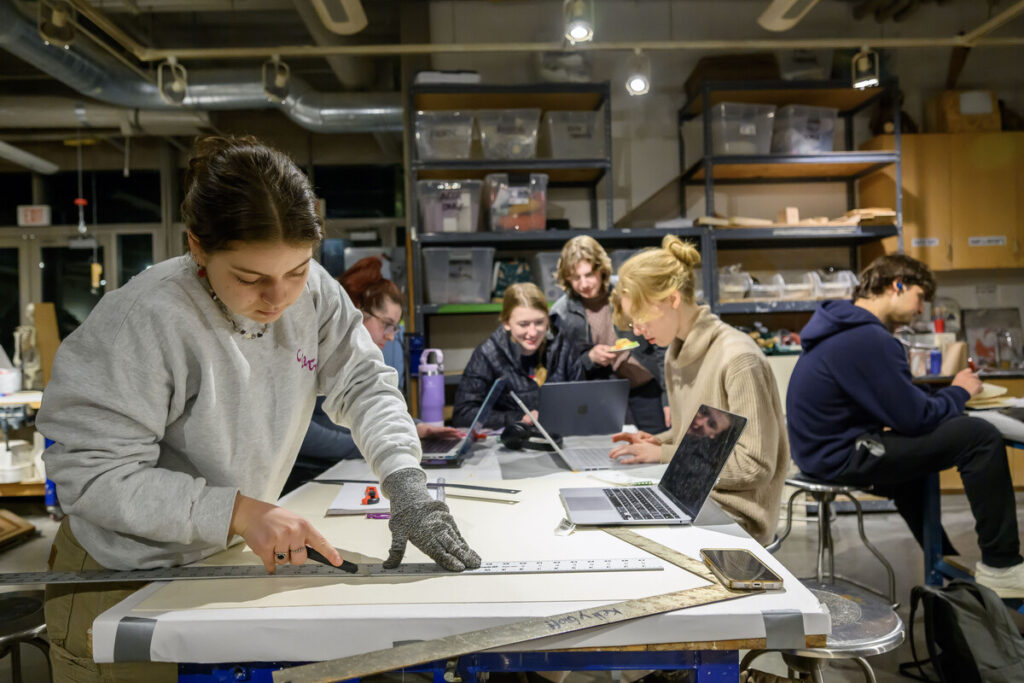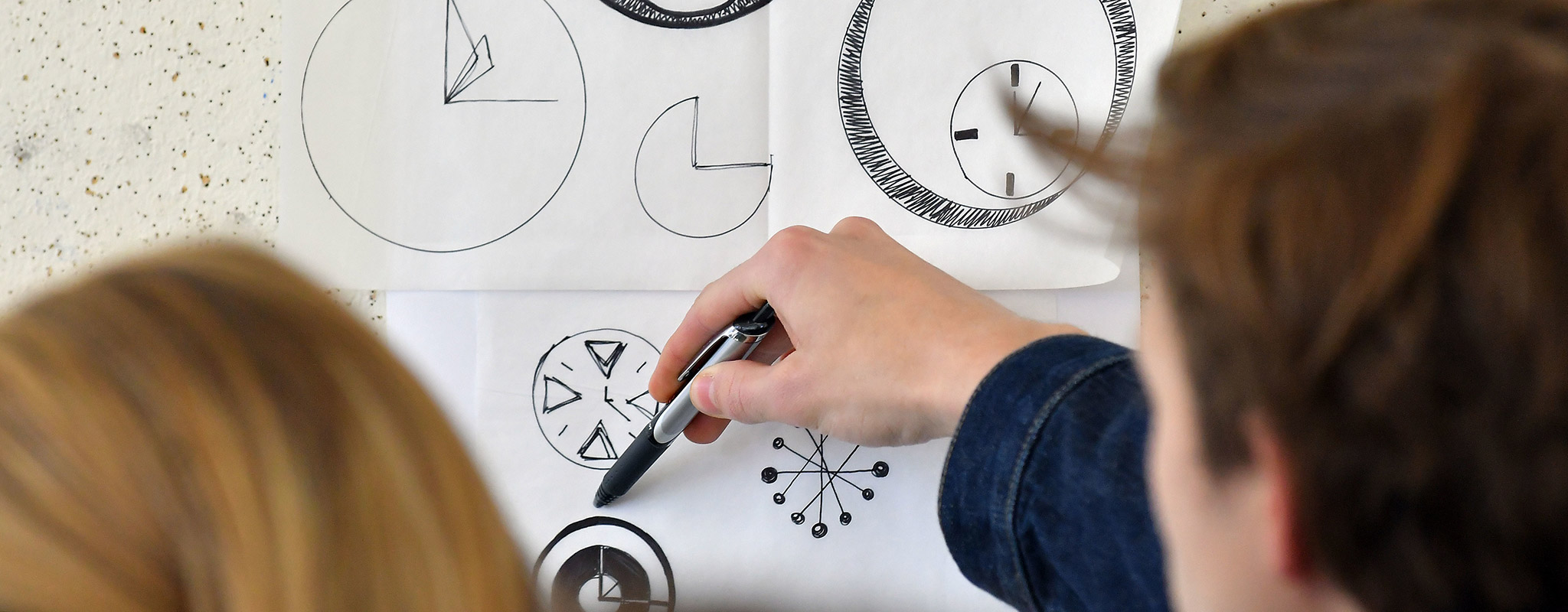Design
Balancing theory and practice for an adaptable education with concrete industry skills
The Design Major and Minor at Wheaton help students develop the skills to successfully begin a career in a range of design fields. The curriculum combines the breadth of the liberal arts with a strong emphasis on practice-based learning. This approach equips graduates with a broadly adaptable education and concrete industry skills to keep pace in this continually evolving profession.
Major
Minor
Why Study Design at Wheaton?

Wheaton’s multidisciplinary approach provides a flexible foundation from which to explore the world of design and keep pace with its constant evolution. The college’s program draws on course offerings in Visual Art and History of Art. Students practice design methods and techniques in courses offered by Theatre and Dance, Film and New Media, Digital Media and Communications, Business and Management and Computer Science, among others. The college’s Innovation Spaces, and the impressive array of resources for hands-on production, provide students with myriad opportunities for practicing the art and science of design.
Learn by Doing
Experiential learning is an essential component of Wheaton’s educational philosophy, and it is deeply woven into the curriculum. Many of the courses in the Design Major are organized around learning and practicing the craft, whether it be a studio class in Printmaking, an animation course in Film, or a web design course in Computer Science.
All Design Majors will complete a capstone project in which they work in collaborative groups (modeling contemporary design practice) on real-world challenges. Projects may be rooted thematically, for example, in issues of social change, health, and the environment. Senior projects will be presented in a spring showcase and students will graduate with a professional case-study portfolio.
Design Courses
The Design Program offers the following courses:
- Digital Tools for Art & Design
- Introduction to Digital Fabrication
- Designing Interactions
- Human-Centered Design
- Industrial Design
- Graphic Design 1
- Interactive Design for the Web
- Designing Architectural Spaces
- Fab Academy
- Graphic Design 2
- Design Studio: Introduction to Professional Practice
- Senior Design Capstone
WheaGo Global
The WheaGo Global First-Semester Study Abroad Program kick-starts your college career in one of the world’s great cities. Immerse yourself in an exciting cultural adventure and focus on your top academic interests.
Alumni in Design
While the formal Design Major is new, many of the courses are longstanding and have provided a pathway for graduates to work in many different fields of design.
Product Designer
Amplify
Brookline, MA
Producer, Human Interface Design
Apple
Cupertino, CA
Senior Graphic Designer
Argot Partners, LLC
New York, NY
Solution Design Manager
Athenahealth
Watertown, MA
Post Production Coordinator
Condé Nast Entertainment
Boston, MA
Senior UX Strategist
Convertiv
Boston, MA
Marketing and Design Manager
Design Imports
Seattle, WA
Creative Director
Image Marketing Consultants
Hartford, CT
Senior Product Designer
Intralinks
Portland, ME
Web Design Specialist
Lenovo Software
Beijing, China
User Experience Researcher
Kiip, Inc.
New York, NY
Video Editor
Markforged
Watertown, MA
Textile Design Leader
Merida
Providence, RI
Graphic Designer
Miami Marlins
Miami, FL
Instructional Design
Northeastern University
Boston, MA
Senior Interior Designer
Rees, Roberts + Partners
New York, NY
Storyboard Artist (film)
Rick and Morty, LLC
Burbank, CA
Lead Product Designer
Toast
Cambridge, MA
Designer
Union Studio Architecture and Community Design
Providence, RI
Style Director, Video Production Design
Wayfair
Boston, MA
UX Designer (web)
WEX
Portland, ME
Design Engineer
Ximedica
Somerville, MA
Department
Offered by the Visual Art and History of Art department.
